Prescription drug-related overdose deaths claimed more than 16,000 lives in 2011,1 prompting the U.S. Centers for Disease Control and Prevention (CDC) to deem prescription drug abuse an epidemic.2 This epidemic does not discriminate – it has affected Americans of all ages, education, income level, gender, and ethnic background.
The epidemic has been particularly widespread on college campuses. Between 1993 and 2005, the number of college students abusing opioid pain medications like oxycodone and hydrocodone increased by 343 percent, while stimulant abuse (e.g., Adderall) increased by 93 percent.3 A recent news report found that about 2 in 3 college students are offered prescription drugs by their senior year, with approximately one-third of them abusing prescription drugs during their college career.4 Furthermore, nearly one out of five college-aged (18-25) Americans has a past-year substance use disorder.5
Policy makers in Washington and state capitals across America are addressing prescription drug diversion and abuse through legislation and regulations, but this alone will not be the panacea. Local, peer-to-peer support organizations focused on prevention, treatment, and recovery play a critical part of a unified effort to reducing prescription drug abuse. Collegiate recovery communities are taking a leading role in doing just that. Collegiate recovery communities are campus-based, student-run organizations that focus on prevention as a public health initiative.
Although cultural norms view drinking and drug use in college as a “rite of passage,” many young adults do not age out of their substance use disorder. Collegiate recovery communities’ peer and professional support and other services such as counseling, substance-free housing, and social activities have helped to prevent enormous personal, social, and economic harm one person at a time. According to the not-for-profit Association of Recovery in Higher Education, the average national relapse rate of collegiate recovery program participants is 5 percent, which means that approximately 95 percent of the students who participate in these programs maintain their recovery through complete abstinence from drugs and alcohol.6 This data is a credit to collegiate recovery programs as relapse rates among the general population range between 40 and 60 percent.7
In society at large, dozens of collegiate recovery communities nationwide are promoting prevention and treatment through raising awareness of substance use risks and the harmful stigma and stereotypes around the disease of addiction, treatment, and recovery. Beyond promoting prevention, treatment, and recovery on campuses, it is incumbent upon collegiate recovery community members to mobilize and gain influence to break stereotypes and stigma.
Not unlike the AARP, arguably the most powerful senior citizens interest group totaling 37 million members, collegiate recovery communities have the enormous potential to expand beyond campuses and effectively change our culture to value prevention and health-focused norms. The expansion of the collegiate recovery community model into a larger scale organization that mirrors the AARP’s capacity and represents people in recovery and their allies has the potential to upend cultural norms and save lives.
So how do you do it? Start by sharing your story, whether it is among peers on campus or with policy makers. Personal testimonials are an effective way to compel action from others, and real stories increase your credibility as you seek to make a difference in the lives of others. By using your voice, you have the potential to build a grassroots movement that will grow the footprint of your collegiate recovery community and inspire others to step up to the plate and be leaders on substance use and addiction beyond graduation.
Collegiate recovery communities are fostering a healthier and more prosperous future for America one person at a time. It is time to expand collegiate recovery communities into a national recovery community organized to promote programs and policies advancing prevention, treatment, and recovery so that no more lives are lost due to substance use disorders.
Kyle Simon is Director of Policy and Advocacy for the Center for Lawful Access and Abuse Deterrence (CLAAD).
——————————————————————————————————————————————————-
2. CDC Grand Rounds: Prescription Drug Overdoses – a U.S. Epidemic, CDC (Jan. 13, 2012), http://www.cdc.gov/mmwr/preview/mmwrhtml/mm6101a3.htm.
3. A Rising Epidemic on College Campuses: Prescription Drug Abuse, Clinton Found. (Jan. 12, 2014), http://www.clintonfoundation.org/blog/2014/01/12/rising-epidemic-college-campuses-prescription-drug-abuse#sthash.bxyCN6x6.dpuf.
4. Zadrozny, Brandy. “7 Things You Need to Know About Adderall.” The Daily Beast/Newsweek. Accessed April 22, 2014
5. Results from the 2012 National Survey on Drug Use and Health: Summary of National Findings, Substance Abuse & Mental Health Servs. Admin. (2013), http://www.samhsa.gov/data/NSDUH/2012SummNatFindDetTables/NationalFindings/NSDUHresults2012.pdf.
6. Frequently Asked Questions, Collegiate Recovery, http://collegiaterecovery.org/resources-2/frequently-asked-questions/ (last visited Oct. 3, 2014).
7. The Science of Drug Abuse and Addiction: The Basics, Nat’l Inst. on Drug Abuse, http://www.drugabuse.gov/publications/media-guide/science-drug-abuse-addiction-basics (last updated Sept. 2014).

